Amazon Return Policy Changes: Everything You Need to Know 2024
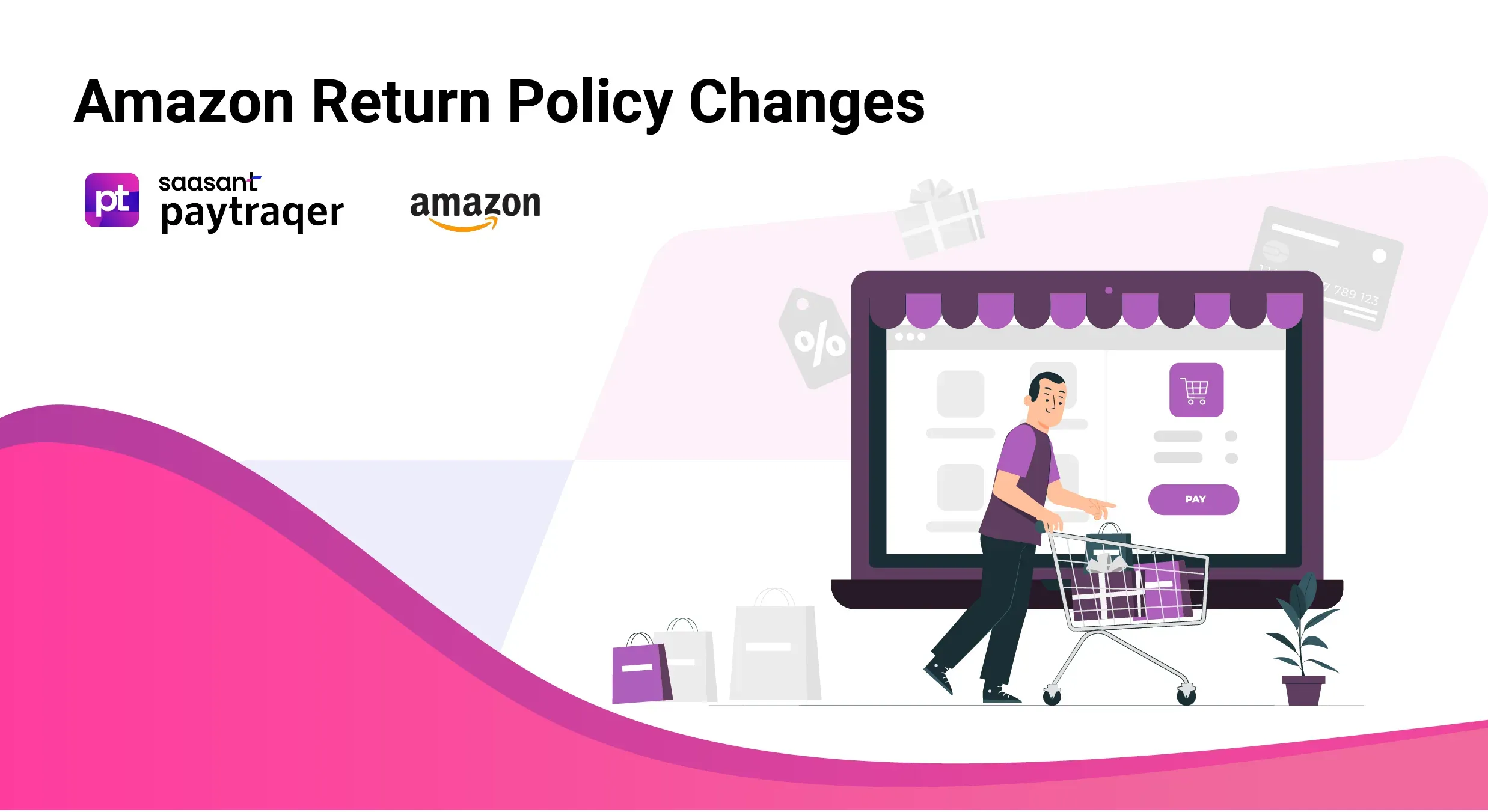
Whether launching your first product or managing a well-established online store, every eCommerce owner must face the challenges of handling customer returns. Receiving a notification about a return request can take a lot of work. The request concerns the financial loss from that particular sale and signals that a customer did not have a satisfactory experience with your product.
To manage returns effectively, you must understand Amazon's return policy. This blog will explain the policy, its changes, and more.
Contents
What is Amazon's Return Policy?
What are the Changes in Amazon's Return Policy?
Amazon Return Policy for Third-Party Sellers
Why Do Customers Return Purchased Products?
How To Process A Return Request as a Seller?
Amazon's Support Programs for Sellers Handling Returns
Conclusion
FAQs
What is Amazon's Return Policy?
Amazon's return policy is tailored to offer flexibility and convenience, ensuring customers have a satisfactory shopping experience. Understanding the Amazon return policy, especially the standard 30-day return window, is crucial for managing returns effectively.
The primary return window for most items sold and shipped by Amazon is 30 days. This standard timeframe applies to most categories, giving customers a sufficient period to decide whether to keep their purchases or initiate a return.
Amazon recognizes the exceptional circumstances around the holiday season and extends its return policy. For example, items purchased during the holiday season from November 1st until the end of December will have an extended return deadline, usually until January 31st of the following year. This extended policy allows gift card recipients and purchasers more time to return their products after the holiday rush.
What are the Changes in Amazon's Return Policy?
In recent years, Amazon has changed its return policy for customers and sellers. These changes aim to streamline processes, enhance customer satisfaction, and maintain a balance between flexibility for buyers and security for sellers.
It is crucial to ensure that each item is returned in the same condition you received. This means that new items should be returned unused, new, and complete, and used items must not show any additional signs of use or damage.
The same restrictions that apply to the right of withdrawal also apply to Amazon Returns Guarantee. Consequently, the following products are not eligible for return under the Returns Guarantee (unless they are defective):
Products that are not suitable for return, for health protection or hygiene reasons, if their seal has been broken after delivery, or if they have been inseparably mixed with other products post-delivery.
Audio or video recordings or computer software are in sealed packaging if the seal has been broken after delivery.
Products made to customer specifications or personalized.
Products that spoil quickly or whose expiration date might be quickly exceeded.
Newspapers, magazines, or periodicals, except subscription contracts.
Alcoholic beverages are where the price was agreed upon at the time of sale. Still, delivery can occur 30 days later, and their value is subject to market fluctuations that the seller cannot control.
Incorrect Returns
Please ensure that the item you are returning is correct and complete to receive a refund. For the safety of the employees and customers, Amazon disposes of returned items incorrectly. If you realize you have returned the wrong item to Amazon, please contact Customer Service immediately.
While Amazon cannot guarantee that the incorrect item will be retrieved and returned to you, contacting them quickly is essential. Please note that Amazon does not refund items mistakenly sent to them.
Data Removal and Return Conditions
When returning an item to Amazon, ensure it is in the same condition as when received and free of all personal data. This includes deleting personal or third-party data from the device, unlinking accounts, and removing unrelated items from the product and its packaging. Failure to clear data can result in data breaches.
Additionally, anything left in the returned item or its box will not be Amazon’s responsibility and will not be returned. Upon processing your return, the item becomes Amazon's property, which may be resold at its discretion.
Return Information for Specific Product Groups
The guidelines below ensure returns' safety, hygiene, and quality and help maintain a smooth return process for various product types.
Brand Items & Customized Products
Items like clothing or electronics with brand labels, guarantee cards, or stickers must be returned with original packaging. Customized products are generally not returnable but may be eligible for a refund or replacement if they arrive damaged or differ significantly from what was ordered.
Clothing and Accessories
Free returns are offered for selected clothing, shoes, handbags, jewelry, and watches, regardless of price. These items should be tried on your clothes for hygiene reasons and returned in original condition.
Hazardous Goods
Items containing hazardous materials must be appropriately labeled and emptied of any hazardous contents before you process your return. For safety, follow specific packaging guidelines provided by Amazon.
Electronics with Storage Media
Devices should have all personal and confidential data deleted before returning. They should be returned empty of any files.
Household Textiles
Items like pillows and bedcovers should be tried, like shopping in a store, and returned in original condition. Textiles in direct contact with skin are not returnable if used.
Food and Drink
Due to their nature, some items can only be returned sometimes. Contact Customer Service for assistance.
AutoRip Music
If you return a CD or record from which you have downloaded or automatically received the MP3 version, you will be charged for the MP3 if it has been used.
Amazon Return Policy for Third-Party Sellers
When you purchase from a third-party seller who manages their own inventory and shipping, returns are sent directly to the seller, not Amazon.
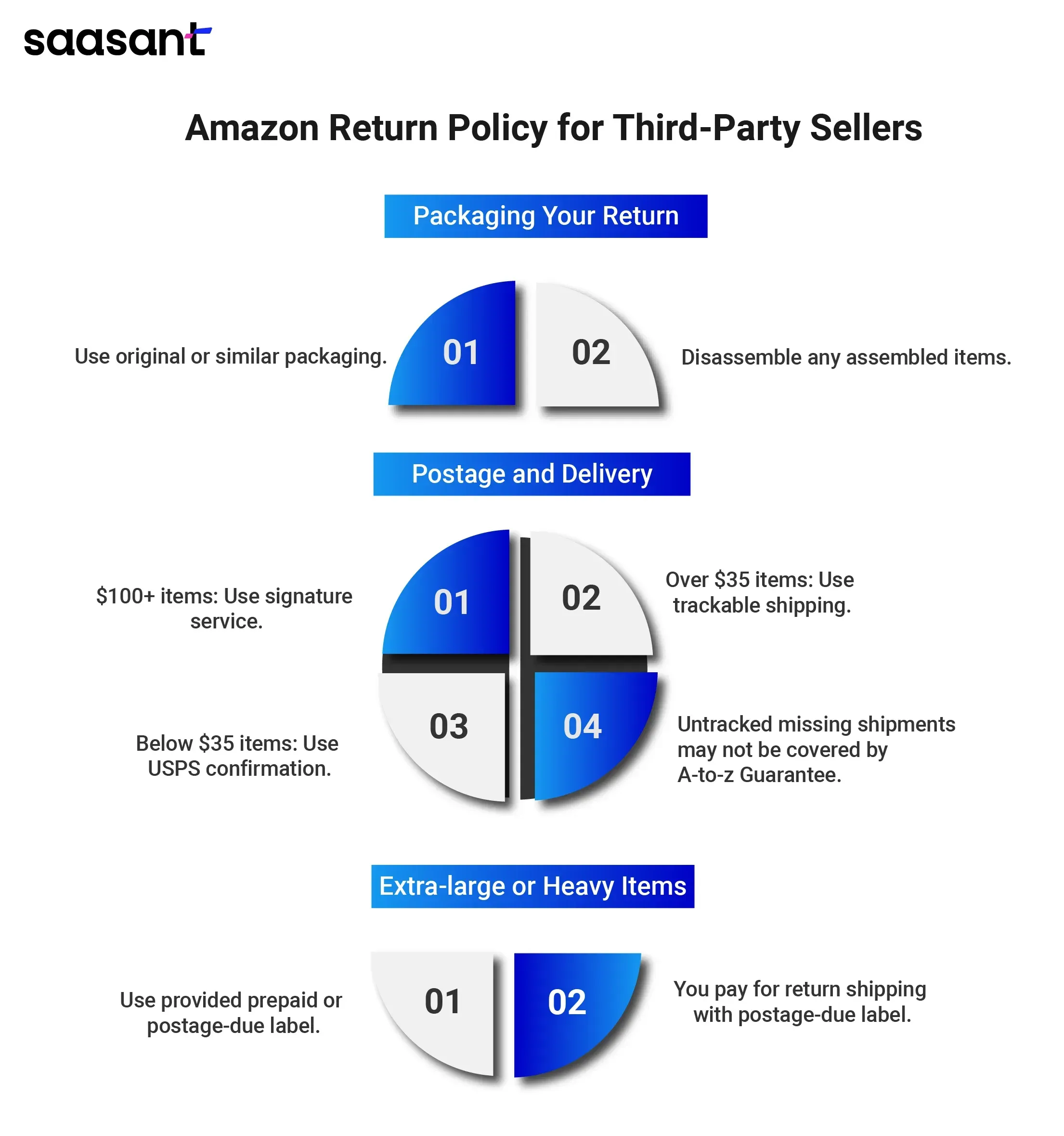
Third-party sellers must comply with Amazon's return policies as detailed in the 'About Our Returns Policies' section. If you need to contact the seller, follow the instructions in 'Contact a Third-Party Seller.' To initiate a return, refer to the 'Return Items You Ordered' section for the necessary steps.
Third-party sellers are required to offer at least one of the following return options:
A return address within the United States;
A prepaid return label or
A full refund without the need to return the item.
If a third-party seller fails to provide one of these options, you can submit an A-to-z Guarantee claim by visiting 'Request an A-to-Z Guarantee Refund.'
Packaging Your Return
Return the item in its original packaging or similarly sized packaging. If the item requires assembly, disassemble it before returning it.
Postage and Delivery Confirmation
To process your return within the United States, adhere to these guidelines:
Items valued at $100 or more: Ensure the shipment and use a signature service.
Items valued over $35: Use a trackable shipping service.
Items below $35: Consider using the USPS delivery confirmation service.
If you do not use a trackable method and the package does not arrive, or if you refuse the shipment as a return method, the A-to-Z Guarantee may not apply.
Extra-large or Heavy Items
You will receive a postage-due label for returning exceptionally large or heavy items, or the seller will provide a prepaid one. You are responsible for covering the return shipping costs if a postage-due label is used. A package is considered extra-large or heavy if it meets any of the following criteria:
Weighs more than 90 lbs.
Exceeds 96 inches in length.
Exceeds a total of 130 inches in length and girth [(2 x width) + (2 x height)].
Why Do Customers Return Purchased Products?
Monitoring why customers return products is crucial, especially for private-label items. Identifying and addressing issues rapidly is essential to maintaining product quality and customer satisfaction.
Frequent 'defective' complaints can lead Amazon to suspend your listing until you resolve the issues temporarily. For instance, if you're selling bicycle helmets and receive multiple complaints about size mismatches or poor fit, Amazon might suspend the listing and potentially your entire seller account.
Investigating the root cause of customer dissatisfaction is essential to prevent many negative reviews. If you end up with unsellable inventory, consider requesting a removal order. This allows you to have the products returned for a detailed inspection, helping you identify and correct any defects.
How To Process A Return Request as a Seller?
Here’s the step-by-step guide on how a seller can manage return requests using Amazon's Manage Returns:
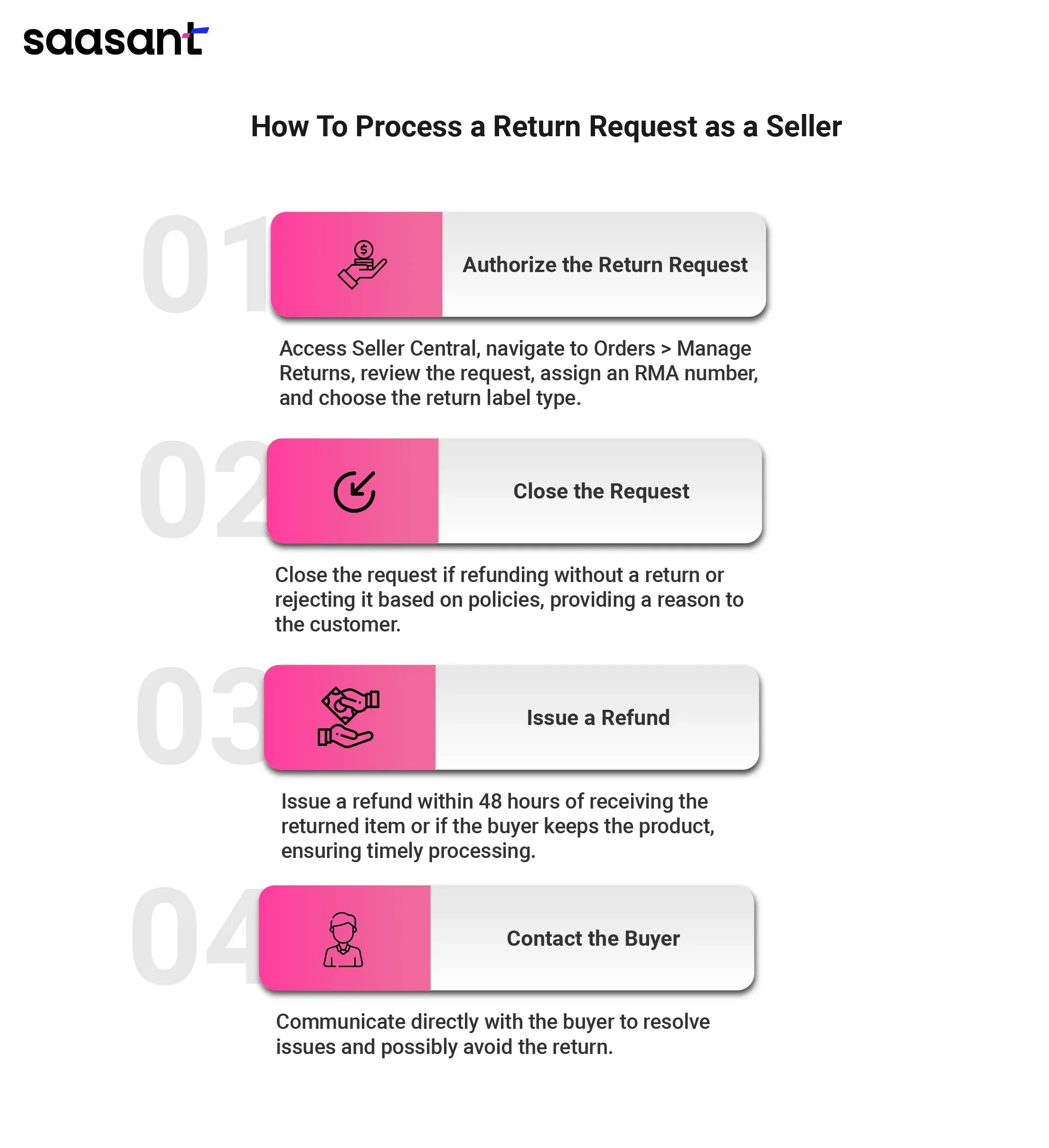
Step 1: Authorize the Return Request
Access your seller central account, and navigate to Orders > Manage returns.
Select the specific return request to review. Use or assign an RMA (Return Merchandise Authorization) number and decide on the return label type (Amazon-generated unpaid or your prepaid label).
If necessary, update your return address under Account Info > Return Address.
To authorize several returns at once, select multiple requests from the Manage Returns page and choose 'Authorize all selected returns' from the dropdown menu.
Step 2: Close the Request
Close the return request if you plan to refund without a return or decide not to accept the return based on Amazon’s policies.
Select a closure reason and explain it to the customer. Amazon will inform the customer of the closure and your reasons.
If a buyer closes the return request, Amazon will notify you via email.
Step 3: Issue a Refund
If you allow the buyer to keep the product, issue a refund after receiving the returned item.
Process the refund within 48 hours of receiving the item to avoid Amazon issuing the refund and charging your account.
Keep track of the refund process to ensure timely receipt by the customer and avoid negative feedback.
Step 4: Contact the Buyer
You can contact the buyer anytime to discuss issues directly. Resolving the problem may prevent the need for a return and refund.
Amazon's Support Programs for Sellers Handling Returns
To help sellers avoid losses from returned or damaged items, Amazon has introduced several programs that allow sellers to regain some costs or repurpose returned, damaged, or used items.
FBA Liquidations
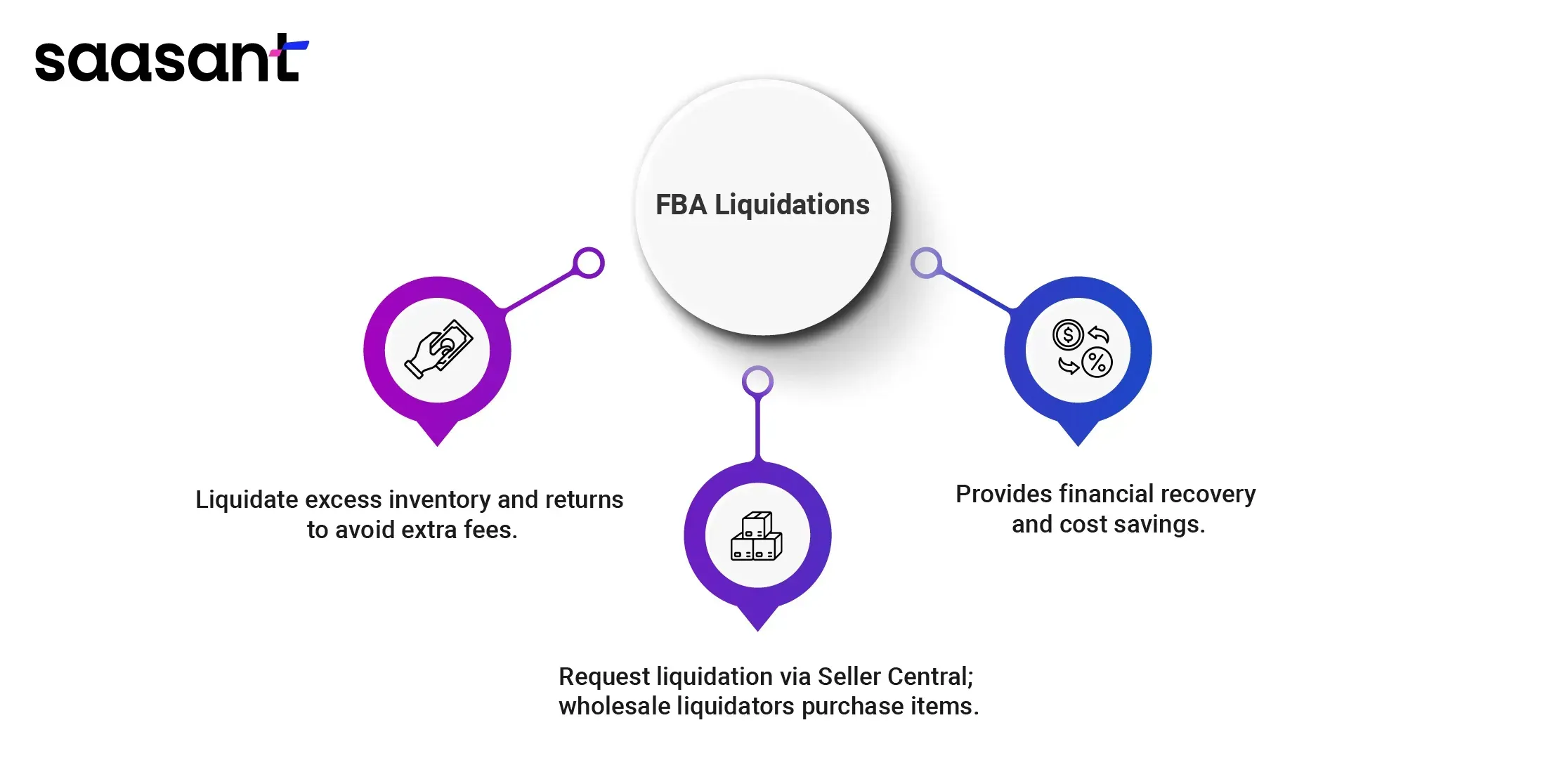
Objective: This program helps sellers liquidate excess inventory and customer returns to avoid paying for destruction or additional storage fees.
Process: Sellers submit a liquidation request via Seller Central. Amazon then evaluates various factors to determine your product’s average selling price. Wholesale liquidators purchase the inventory at approximately 5% to 10% of this price. Sellers receive payment from Amazon within 60 days.
Benefits: It offers a financial recovery option for excess or used inventory, saving costs on destruction or return.
FBA Grade and Resell
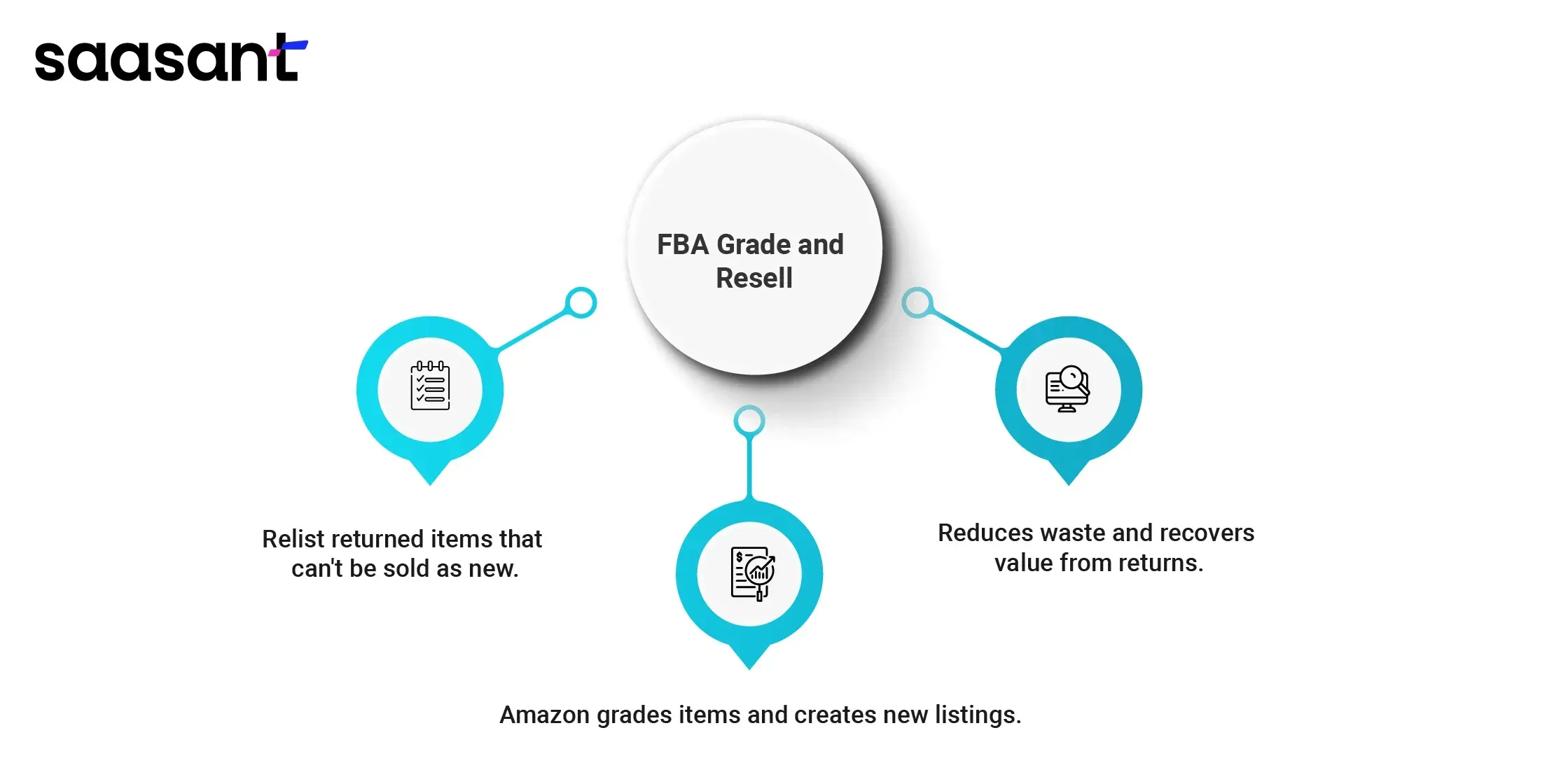
Objective: This enables sellers to relist and sell returned inventory that cannot be fulfilled as new, categorizing it as used items.
Process: Sellers enter their unfulfillable inventory into the program. Amazon assesses and grades the items as Used – Like New, Used – Very Good, Used – Good, or Used – Acceptable and facilitates a new listing for each graded item.
Benefits: This reduces waste by avoiding the destruction of unfulfillable items and helps sellers recover some value from returns.
FBA Donations
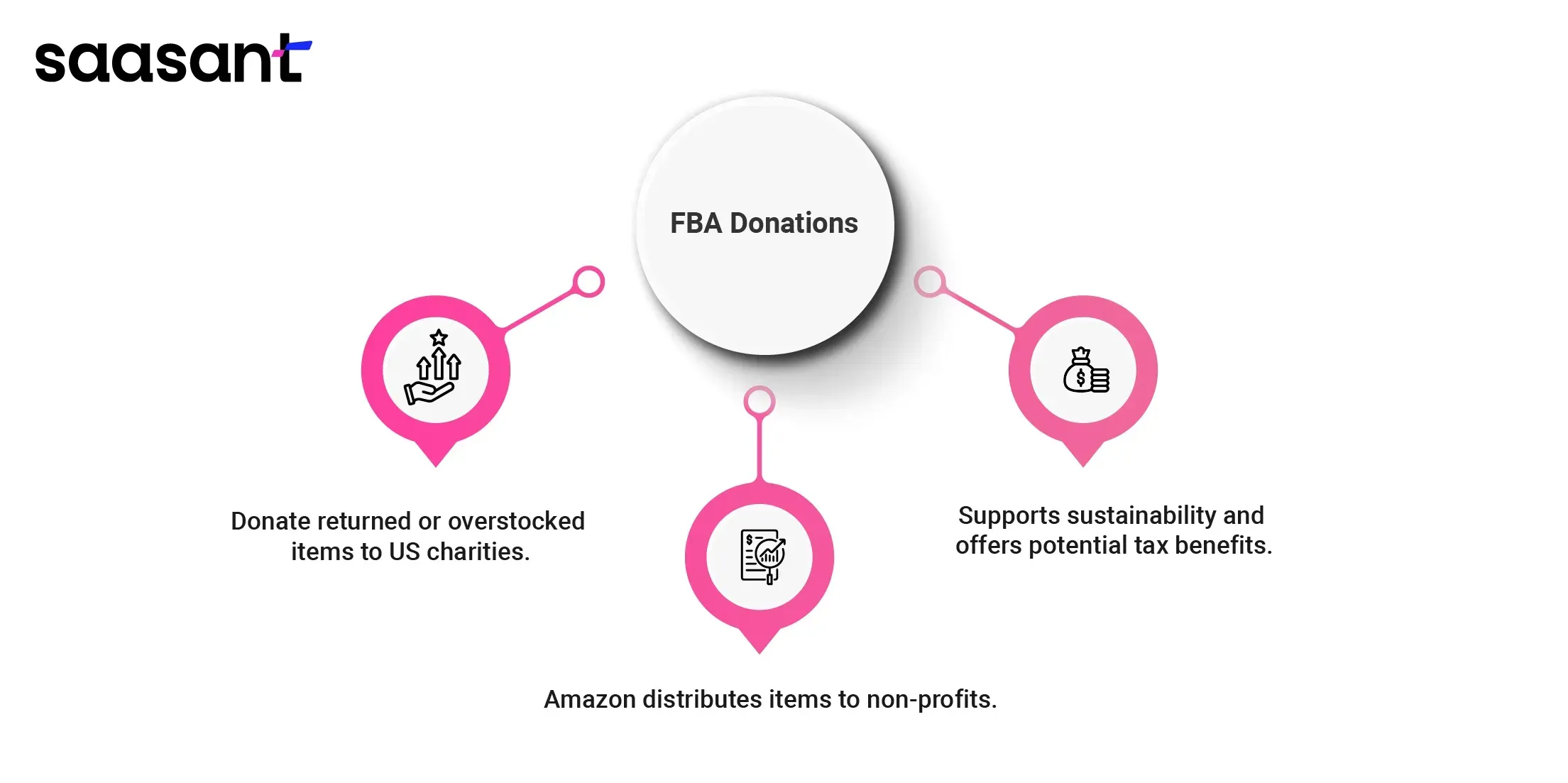
Objective: It allows sellers to donate returned or overstocked items to US charities, providing a socially responsible disposal option.
Process: Sellers choose to donate eligible inventory through Amazon’s partnership, which distributes items to a network of nonprofit organizations.
Benefits: It supports environmental sustainability by reducing landfill waste offering potential tax benefits while helping those in need.
Conclusion
Amazon Return Policy updates for 2024 bring necessary changes that sellers and buyers must be aware of. These changes aim to enhance customer satisfaction with more straightforward processes and extended return windows while offering sellers more precise guidelines and better support. Staying up-to-date with these modifications ensures a smooth and efficient return experience.
With the latest updates to Amazon's return policies, understanding and adapting to changes is more crucial than ever for sellers. Don't let the challenges slow you down. Discover how integrating your Amazon sales with QuickBooks and Xero can transform your business. Sync sales, fees, refunds, transactions, and taxes effortlessly. Automate your bookkeeping and focus more on growing your business. Learn how to simplify your Amazon bookkeeping today!
FAQs
Do Amazon sellers get returns back?
Amazon sellers receive returned items unless they use Amazon’s disposal or donation services. Sellers using Fulfillment by Amazon (FBA) can have returns sent to Amazon's warehouses, where they are processed according to the seller's pre-set instructions.
When will Amazon issue a refund?
For products shipped by Amazon, they will process your refund within a maximum of 14 days and notify you via an automated email once it's issued. Once the refund is initiated, it should appear in your bank account or credit card statement within seven business days.
Do Amazon sellers get charged for returns?
Yes, sellers can be charged for returns if they use Amazon’s FBA service. The fees might include processing and restocking charges. Sellers who handle their logistics (Fulfillment by Merchant or FBM) have more control over return costs but must stick to Amazon’s return policies.
Can Amazon sellers refuse a return?
Generally, Amazon sellers cannot refuse returns if they fall within Amazon’s return policy guidelines. However, sellers can set specific return policies for their items if they meet or exceed Amazon's minimum standards. Also, the seller can refuse to return the product if it is damaged.
Who pays for returns on Amazon?
The payment responsibility for returns can vary. Amazon might cover the cost for items fulfilled by Amazon if the item is defective. For third-party sellers, the responsibility can depend on the seller’s return policy. Some sellers offer free returns, while others might require the buyer to pay for return shipping unless the item is damaged.